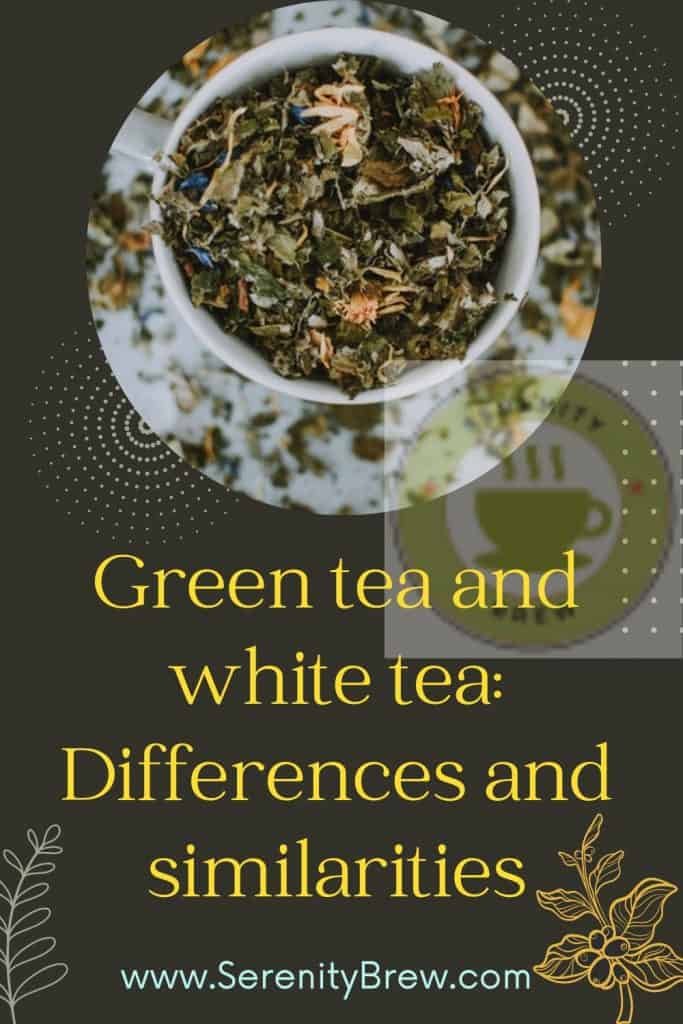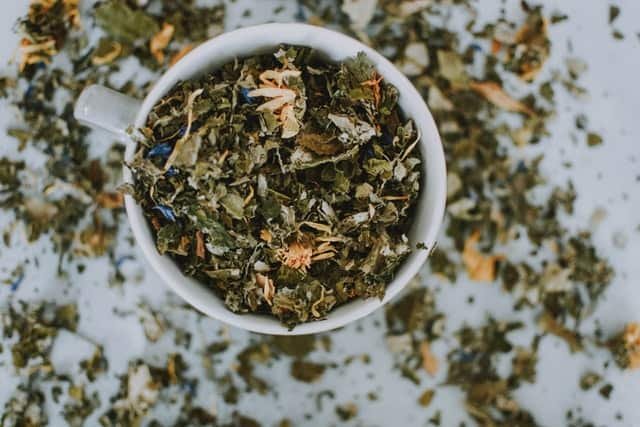
More than likely you know green tea well. On the contrary, white tea is well known among tea lovers but, for various reasons, it has not caught on with the general public.
In recent decades, green tea has been the subject of numerous studies, which have made it gain popularity as a healthy drink. For its part, the great antioxidant properties of white tea are making it a trendy drink. White teas are becoming easier to find on supermarket shelves, although their quality often leaves a lot to be desired.
Both the family of white and green teas are made up of multiple varieties. The differences in the preparation and in the raw material used achieve very different flavors within the same group. In this article, we are going to make an effort to generalize and identify the main differences and similarities to know if it is green tea or white tea.
Green tea or white tea? How are they alike and how are they not?
White and green are tea varieties that go through a low oxidation process during brewing. This means that, in some cases, differentiating them requires a slightly more experienced palate in the world of tea. Now, what do they have in common and what differentiates these two tasty varieties of tea?
Raw material
Both green tea and white tea are made from the leaves of the tea bush, Camellia sinensis. In some types of tea, in addition, specific varietals of this plant are used, such as Da Bai in the case of white teas. This is famous for the large size of its buds.
Harvesting of the leaves to produce white tea is usually done earlier than for green varieties. The shoots are harvested when they are not yet fully open. These buds are covered in plant fibers that resemble small hairs.
The leaves to make green tea are picked once they are open. The main shoots are used to make the most exclusive varieties, while the others go to lower quality teas.
All this can vary totally depending on the type of tea that is being made, the world of tea is complex and it is difficult to generalize. The important idea is that, in making white tea, special emphasis is placed on using only the choicest parts of the tea bush.
Elaboration
The brewing methods for white or green tea start the same way. The leaves are collected and briefly withered.
A short time later, the white tea goes through a gentle steaming process that stops the natural oxidation process of the leaves. This is why white tea is the least oxidized variety of tea.
In contrast, to make green tea, the leaves are left to oxidize a little longer, before the process is stopped. In this case, the Japanese usually use steam cooking, while the Chinese usually use a wok. In some varieties, moreover, the cooking is not complete, a factor that leaves room for the tea to follow a controlled oxidation process after cooking.
The green tea production process continues with several more phases, while the white one stops here. White tea is often said to follow the least aggressive and most natural brewing process, as it is simply picked and boiled.
Taste
There are literally hundreds of varieties of green teas out there, so it’s hard to define exactly what flavors they taste. In general, one can speak of flavors with a significant vegetable component. Steamed Japanese ones are characterized by fruity and floral flavors, while wok -roasted Chinese ones often add toasty, herbaceous aromas.
The flavors of white teas are defined by their delicacy and smoothness. They are usually considered teas that require more sensitive and experienced palates and are common favorites of the great connoisseurs of the world of tea.
Price
Let’s speak clearly. White tea (or at least a decent one) costs money. Usually more than green tea.
This is due to the exquisite raw material used. Harvesting only (or practically) only the unopened buds of the tea leaves means that the harvest is reduced and very restricted to a specific time.
Which has more caffeine?
Generalizing the amount of caffeine contained in a tea is almost an impossible mission. This is because variables such as the cultivation area, the type of leaf and even the time it is infused can affect the concentration of this substance.
Although the popular opinion is that white tea has less caffeine than green tea, this will depend on the previous points.
Of course, one factor that affects the amount of caffeine in white tea is the type of raw material used to make it. The young, unopened buds used to make white tea usually contain more caffeine than the fully developed leaves.
White tea or green tea: which is healthier?
Tea in general, and therefore all members of its family, has many beneficial effects on health. These are fundamentally related to the antioxidant action of its components, catechins and polyphenols.
The oxidation process that teas go through during their preparation affects the concentration of these antioxidants. In the case of the green and white varieties, both have a low degree of oxidation, but the least oxidized variety is white tea.
Antioxidant properties
Antioxidants are famous for fighting free radicals, protecting cells from damage and thus potential chronic disease. It is believed that they could play an important role in improving:
- Heart health.
- Osteoporosis.
- Lower cholesterol.
- Reduce the risk of cancer.
- Reduce the risk of diabetes.
- Reduce the risk of neurodegenerative diseases.
In the case of cardiovascular disease, this is because antioxidants work by helping to relax blood vessels and also by preventing the oxidation of “bad” cholesterol, two triggers of heart disease.
Both white and green tea are, in short, excellent drinks to include in your daily life due to their antioxidant properties.
Green tea has probably gained more popularity as a healthy drink because there are more studies around it. It is also true that it is easier (and also cheaper) to obtain.
Despite this, white tea has a higher antioxidant power and therefore its consumption could maximize these benefits.
Slimming effect
Another health-related topic much studied lately is how antioxidants could contribute to weight loss.
While green tea has become famous throughout the world as THE brew for weight loss, did you know that there are studies suggesting that white tea may increase metabolism by 5%?
As you can see, both infusions could be a good option to incorporate into your diet to lose those extra kilos.
Select your next cup

Entering the world of white teas is not easy, but it is worth it. We invite you, when you savor your next cup, to pay attention to the subtlety of its flavors and try to appreciate the differences with a cup of green tea.
You already know the theory, now go to the practical part and prepare your cup of tea.
